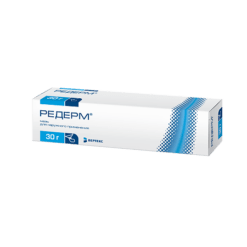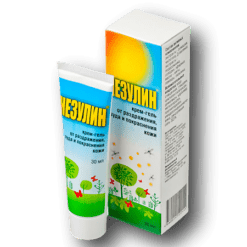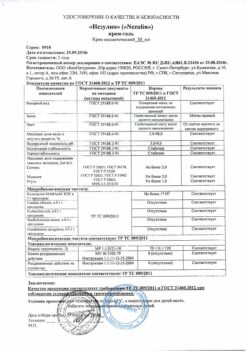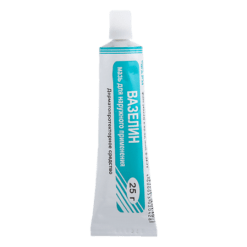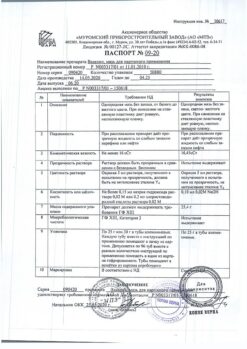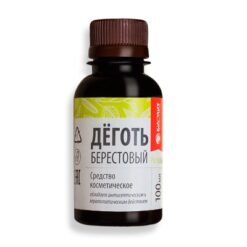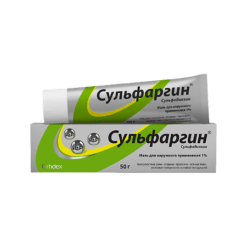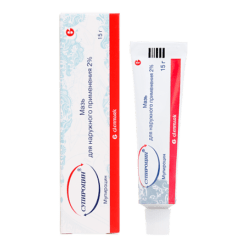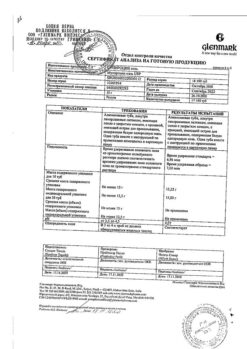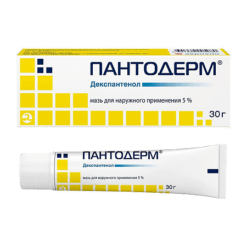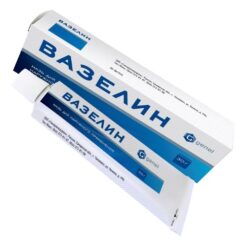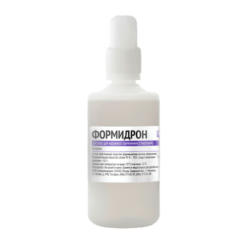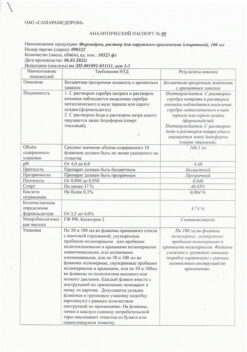No products in the cart.
Rederm ointment, ointment 15 g
€7.71 €6.75
Description
A combination drug for external use, the action of which is due to its constituent components; the drug has anti-inflammatory, anti-allergic, antipruritic, keratolytic effect.
Betamethasone inhibits release of inflammatory mediators, prevents edge accumulation of neutrophils, reduces inflammatory exudate and cytokines production, decreases macrophages migration resulting in reduction of infiltration and granulation processes.
Owing to the presence of salicylic acid, it softens the skin, eliminates stratum corneum and promotes deeper penetration of betamethasone.
Indications
Indications
Therapy of subacute and chronic dermatoses accompanied by hyperkeratosis and peeling:
– psoriasis;
– dyshidrotic dermatitis;
– eczema;
– neurodermatitis;
– lichen planus;
– ichthyosis and ichthyotic skin lesions;
– atopic dermatitis;
– diffuse neurodermatitis;
– simple and allergic dermatitis;
– urticaria;
– exudative erythema multiforme;
– simple chronic lichen (limited neurodermatitis);
– dermatoses that cannot be treated with other corticosteroids (especially verrucous verrucous);
– skin dyshidrosis.
Pharmacological effect
Pharmacological effect
A combined preparation for external use, the effect of which is determined by its constituent components; the drug has anti-inflammatory, antiallergic, antipruritic, keratolytic effects.
Betamethasone inhibits the release of inflammatory mediators, prevents the marginal accumulation of neutrophils, reduces inflammatory exudate and the production of cytokines, reduces the migration of macrophages, leading to a decrease in the processes of infiltration and granulation.
Thanks to the presence of salicylic acid, it softens the skin, eliminates horny layers and promotes deeper penetration of betamethasone.
Special instructions
Special instructions
Avoid contact of the drug with the eyes; do not apply to the skin near the eyes and mucous membranes. The drug is not intended for use in ophthalmology.
With prolonged treatment, application of the drug to large surfaces of the skin, and the use of occlusive dressings, systemic absorption of GCS is possible.
Long-term use on the skin of the face is not recommended – the development of dermatitis such as rosacea, perioral dermatitis, skin atrophy and acne is possible; Use in the anogenital area should be avoided.
The ointment is most suitable for treating patients with dry and fragile skin.
If signs of hypersensitivity or skin irritation associated with the use of the drug are observed, treatment should be discontinued and adequate therapy should be selected for the patient.
With long-term use of the drug, its withdrawal should be carried out gradually.
Active ingredient
Active ingredient
Betamethasone, Salicylic acid
Composition
Composition
100 g ointment contains:
active substances:
betamethasone dipropionate in terms of betamethasone – 0.05 g,
salicylic acid – 3.0 g;
excipients:
liquid paraffin (vaseline oil),
Vaseline (white petroleum jelly, white soft paraffin).
Contraindications
Contraindications
Hypersensitivity;
open wounds;
bacterial, viral and fungal skin diseases (pyoderma, syphilis, skin tuberculosis, chicken pox, herpes, actinomycosis, blastomycosis, sporotrichosis);
post-vaccination skin reactions;
perioral dermatitis;
rosacea;
trophic ulcers against the background of chronic venous insufficiency;
skin tumors (skin cancer, nevus, atheroma, epithelioma, melanoma, hemangioma, xanthoma, sarcoma);
lactation period;
children under 2 years of age.
With caution:
Liver failure; children’s age (over 2 years); long-term therapy, especially with the use of occlusive dressings.
Side Effects
Side Effects
Burning, irritation, dryness, hypopigmentation, skin itching, folliculitis, hypertrichosis, dermatitis, acne-like rashes.
When using occlusive dressings – maceration of the skin, stretch marks, skin atrophy, secondary infection, prickly heat.
With long-term use – skin atrophy, local hirsutism, telangiectasia, purpura, hypopigmentation, hypertrichosis.
When applied to large surfaces, systemic manifestations of side effects of GCS (growth retardation, Itsenko-Cushing syndrome, increased ICP after treatment, hyperglycemia, glucosuria, hypokalemia, increased blood pressure) or salicylates (pallor, increased fatigue, drowsiness, hyperventilation against the background of tachypnea, nausea, vomiting, hearing impairment, confusion).
Overdose
Overdose
Symptoms:
acute overdose is unlikely, however, with excessive or prolonged use of the drug, chronic overdose is possible, accompanied by signs of hypercortisolism – hyperglycemia, glycosuria, reversible inhibition of adrenal function, manifestation of Cushing’s syndrome.
Treatment:
appropriate symptomatic treatment is indicated. In case of chronic toxic effects, gradual withdrawal of the drug is recommended.
Manufacturer
Manufacturer
Vertex, Russia
Additional information
| Manufacturer | Vertex, Russia |
|---|---|
| Medication form | topical ointment |
| Brand | Vertex |
Other forms…
Related products
Buy Rederm ointment, ointment 15 g with delivery to USA, UK, Europe and over 120 other countries.


